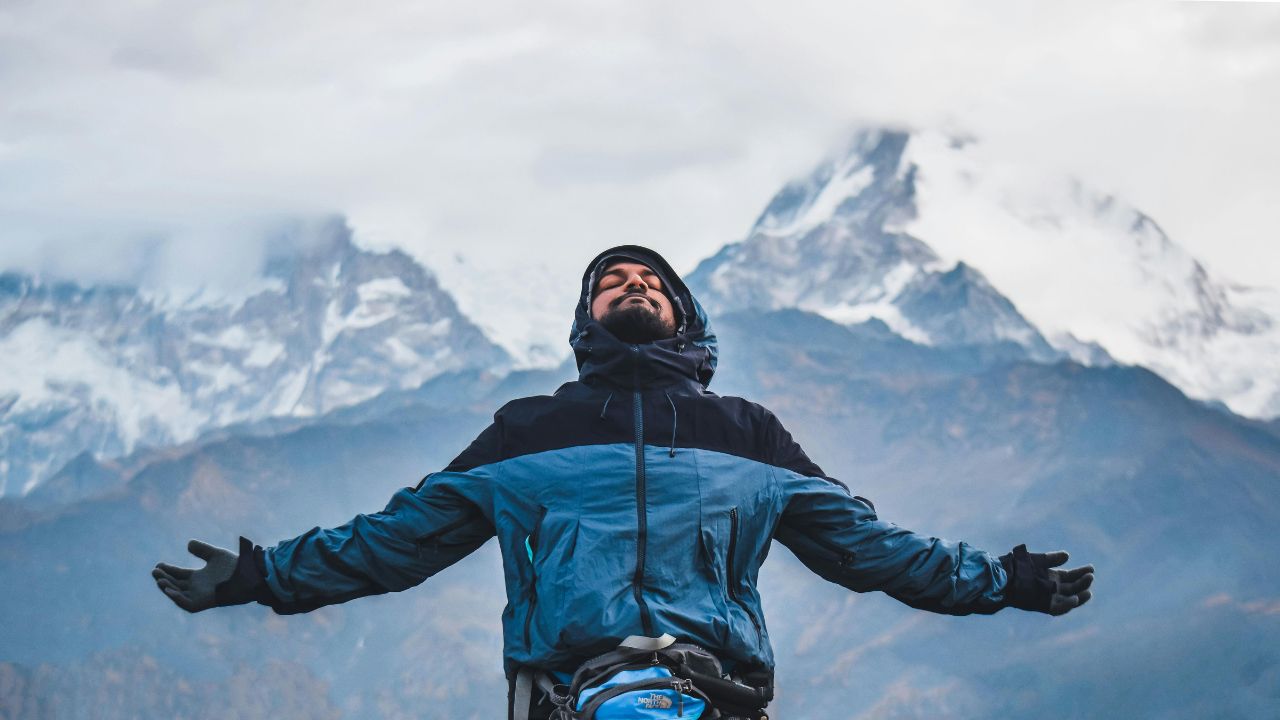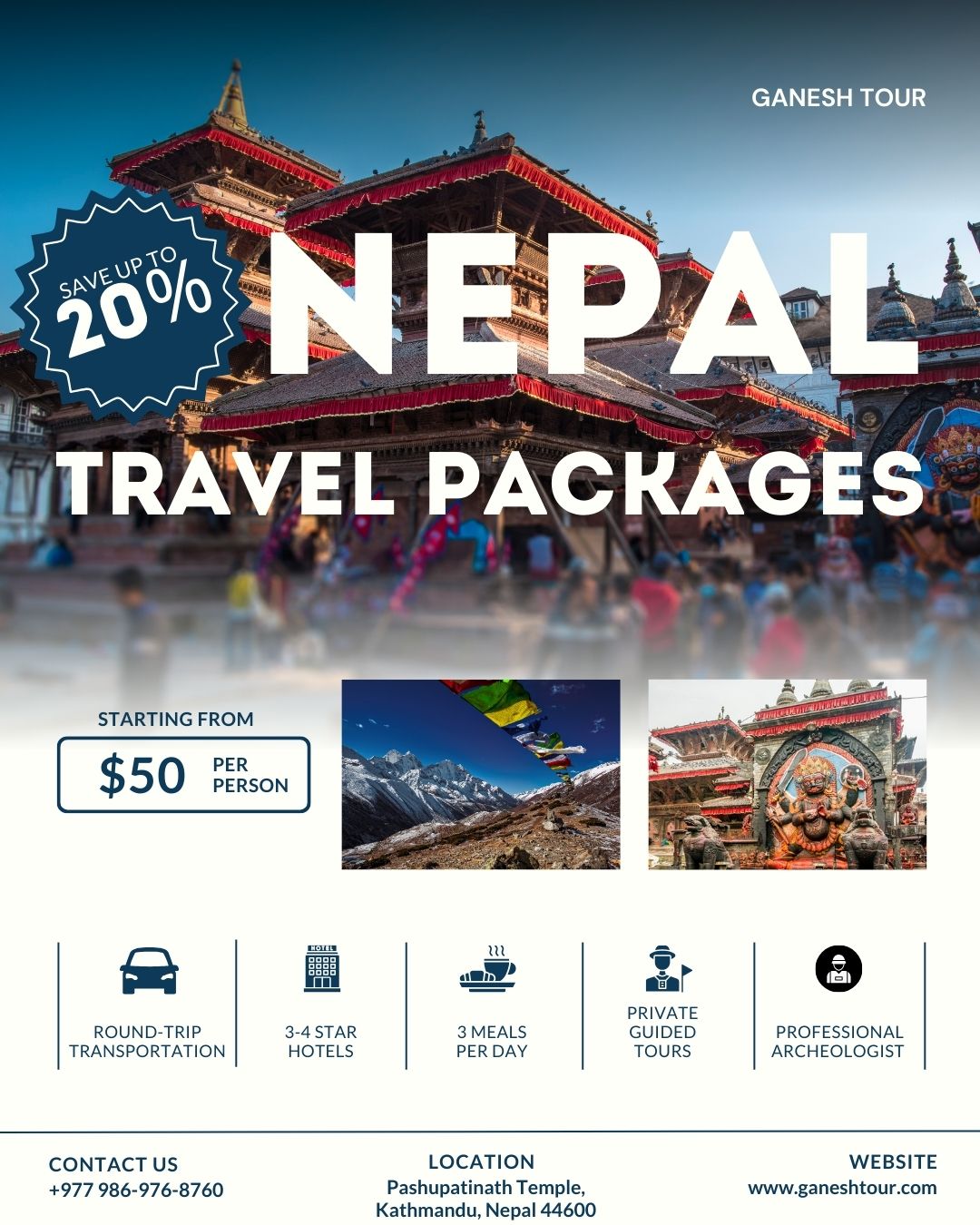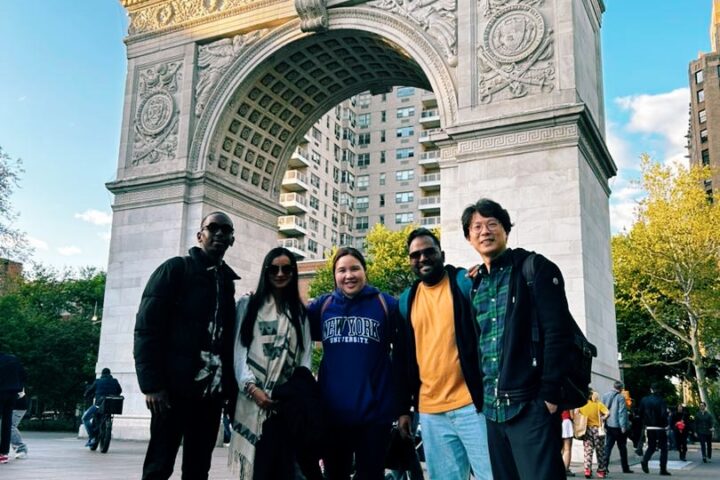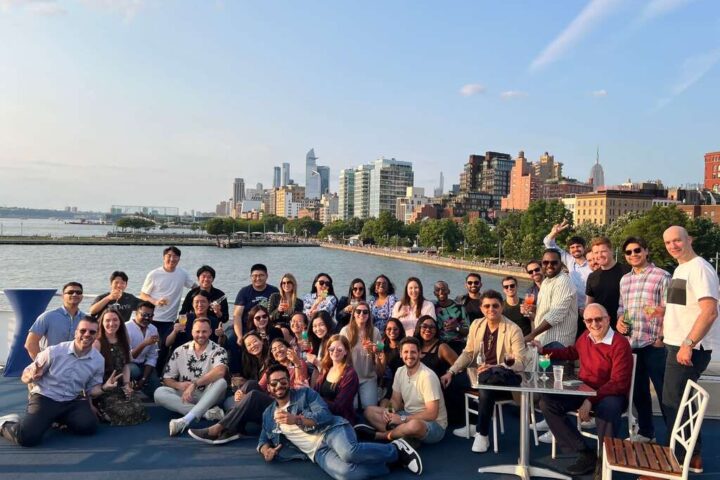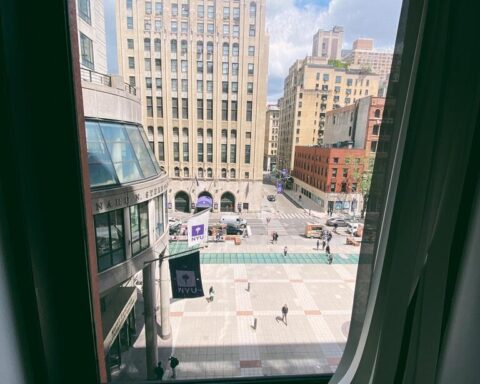- Trip Duration: 15 Days
- Starting Point: Kathmandu
- Difficulty Level: Moderate
- Accommodation: Hotels and Local Tea Houses
- Transportation: Bus and Jeep
- Maximum Altitude: 5,106 meters
- Ending Point: Kathmandu
- Group Size: Minimum 2 People
- Meals Included: Breakfast at the Hotel in Kathmandu
- Contact us on WhatsApp for more details!
Highlights
- Circle around the mighty Manaslu, the world’s eighth tallest giant at 8,156 meters!
- Spot amazing wildlife and trek through landscapes so green, they’ll make your jaw drop.
- Tick off iconic UNESCO World Heritage Sites right in bustling Kathmandu!
- Step into a world untouched by time as you explore the charming villages of the Manaslu region.
Overview of Manaslu Circuit Trek – A Legendary Journey Off the Beaten Path
Get ready for a trek packed with awe-inspiring scenery, authentic culture, and a true sense of adventure!
The Manaslu Circuit offers everything from soaring Himalayan peaks to untouched villages — a real taste of Nepal away from the crowds. Our program is thoughtfully crafted with plenty of time for acclimatization, ensuring you’re fully ready to take on the iconic Larkya La Pass.
Unlike the busy trails of Everest and Annapurna, the Manaslu Circuit remains peaceful and raw, offering breathtaking mountain views at every turn. Opened to trekkers only in 1991, this route hugs the Tibetan border and requires special permits — but the rewards are absolutely worth it.
Circling the mighty Mt. Manaslu (8,156 meters — the world’s eighth-highest peak), the trail winds through lush forests, lively river valleys, and timeless villages where ancient cultures still thrive. You’ll start from Gorkha or Arughat Bazaar and follow the Budi Gandaki River deep into the heart of the Manaslu region.
Yes, the climb over Larkya La Pass (5,100 meters) is a challenge — but with our experienced crew and carefully planned itinerary, you’re in good hands. Whether you camp under the stars or stay in cozy teahouses, every step reveals something new and unforgettable.
This is trekking at its purest — adventurous, beautiful, and rich in culture.
Keep reading to discover the full itinerary and how you can make this incredible journey your own!
When’s the Best Time to Trek the Manaslu Circuit?
If you’re dreaming of the perfect Manaslu adventure, aim for spring (March to May) or autumn (September to November) — the absolute best seasons to hit the trail!
These months bring the most stable weather, clear blue skies, and comfortable temperatures, creating ideal conditions for trekking. Spring adds a splash of color with rhododendron forests in full bloom, while autumn gifts you crystal-clear mountain views and a glimpse into the lively harvest celebrations of local villages.
Spring is a favorite for nature lovers — think vibrant flowers, fresh mountain air, and mild days perfect for trekking. Meanwhile, autumn is all about dramatic Himalayan vistas, with snow-capped peaks shining against impossibly blue skies. The cooler temperatures and festive village atmosphere make every step a joy.
Sure, winter (December to February) and monsoon season (June to August) are technically possible — but they come with extra challenges. Winter can be brutally cold, with heavy snow making the trails icy and tough to navigate. Monsoon brings heavy rain, slippery paths, and the risk of landslides — not exactly the conditions you want for a once-in-a-lifetime trek.
Plan your trek for spring or autumn, and you’ll experience Manaslu at its absolute best — peaceful trails, stunning views, and unforgettable moments.
And the bonus? You’ll avoid the heavy crowds you often find on the Everest and Annapurna routes. Manaslu remains a true gem for those who seek beauty and serenity.
Why Choose the Manaslu Region Trek?
Looking for a trek that’s got it all — jaw-dropping landscapes, a real sense of adventure, and a deep dive into Himalayan culture? The Manaslu Circuit Trek delivers it in spades.
Think lush valleys, terraced hillsides, soaring snow-capped peaks, and peaceful forests — all stitched together along trails that are blissfully less crowded than Everest or Annapurna. Here, it’s just you, nature, and the rhythm of the mountains.
One of the trek’s biggest thrills? Crossing the legendary Larkya La Pass at a heart-pounding 5,160 meters (16,930 feet)! It’s a tough climb, but the sweeping panoramas from the top are pure magic — and the sense of achievement? Unforgettable.
Along the way, you’ll weave through remote villages rich in Tibetan culture, meet warm-hearted locals, and glimpse a way of life untouched by time.
But it’s not just about the mountains and villages — the wildlife here is a whole adventure on its own. Keep your eyes peeled for snow leopards, Himalayan tahr, blue sheep, and colorful birdlife as you trek through the stunning Manaslu Conservation Area, a protected gem that showcases both natural beauty and cultural heritage.
The Manaslu Trek is perfect for trekkers who crave something wilder, quieter, and more real.
It’s a journey across ancient lands, over daring passes, and through villages where tradition still beats strong — an experience that’s not just about walking, but about feeling alive.
At Luxury Holidays Nepal, we’re here to make sure your Manaslu adventure is smooth, safe, and simply unforgettable. Our seasoned guides, carefully crafted itineraries, and all-in-one packages (permits, accommodation, meals — you name it!) mean you can focus on what matters most: soaking up every epic moment.
If you’re ready for a trek that’s as rewarding as it is breathtaking, the Manaslu Circuit is calling.
Spring and autumn offer the best conditions — and with the right preparation and the right team, your Himalayan dream is just a step away.
Itinerary
Day 1: Arrival in Kathmandu (1,360m)
Touchdown in Nepal! Our friendly team will pick you up and transfer you to your hotel. After a quick trek briefing, enjoy your first taste of Kathmandu with a welcome dinner and cultural dance show. Overnight in Kathmandu.
Day 2: Kathmandu Sightseeing
Explore the city’s spiritual heart with visits to the massive Boudhanath Stupa and sacred Pashupatinath Temple. Free time in the afternoon to shop or chill in Thamel. Breakfast included.
Day 3: Drive from Kathmandu to Soti Khola (8 hours)
Early morning departure! We’ll wind through scenic countryside, crossing vibrant towns like Gorkha Bazaar before reaching Soti Khola by afternoon. Overnight at a local teahouse.
Day 4: Trek to Machha Khola (990m) – 5–6 hours
The real trekking begins! Follow narrow trails past hillside villages and forests until you reach Machha Khola. Teahouse stay.
Day 5: Trek to Jagat (1,370m) – 6 hours
Trek upstream and through lush forests to reach the lively village of Jagat.
Day 6: Trek to Deng (2,095m) – 8 hours
Climb through terraced hills and deep valleys, catching early glimpses of the mighty Sringi Himal. Overnight in Deng.
Day 7: Trek to Namrung (2,630m) – 6 hours
Follow the Deng River through Mani walls and chortens — signs you’re entering Tibetan-influenced territory. Overnight in Namrung.
Day 8: Trek to Samagaun (3,530m) – 7–8 hours
Trek toward Samagaun, a stunning village framed by Naike Peak and Manaslu North. Overnight stay.
Day 9: Acclimatization Day at Samagaun
Take it easy! Explore ancient monasteries, stroll to glacial lakes, or just soak in the Himalayan energy.
Day 10: Trek to Samdo (3,850m) – 4 hours
A shorter day as you ascend to Samdo, a traditional Tibetan refugee village high in the mountains.
Day 11: Trek to Dharmasala (4,460m) – 4 hours
Climb higher through yak pastures to Dharmasala, your last stop before the big crossing!
Day 12: Cross Larkya La Pass (5,100m) and trek to Bhimtang (3,950m) – 8–9 hours
The big day! Cross Larkya La for spellbinding views, then descend to the magical valley of Bhimtang. Celebrate your achievement!
Day 13: Trek to Dharapani (1,680m) – 7–8 hours
Drop into lush forests and charming villages on your way down to Dharapani.
Day 14: Drive back to Kathmandu – 9 hours
After a hearty breakfast, hop on a scenic drive back to Kathmandu for a final night of relaxation.
Day 15: Departure Day
Time to say farewell! We’ll transfer you to the airport — or stick around for more Nepal adventures if you’re not ready to leave yet!
Trip Includes:
- Airport and hotel transfers by private vehicle.
- 3 nights’ hotel accommodation in Kathmandu with breakfast.
- All essential trekking permits.
- Experienced trekking guide and porter.
- 11 nights’ local lodge accommodation during the trek.
- First aid medicine for the trek.
- One-day sightseeing tour of Kathmandu.
- Welcome dinner at a typical Nepali restaurant.
- All required ground transport by jeep and bus.
- Porter to carry your belongings during the trek (1 porter for 2 people).
- Company duffel bags and sleeping bags.
- An adventure certificate upon completion of the trek.
Trip Excludes:
- Nepal entry visa and international flights.
- Alcoholic beverages, bottled mineral water, soft drinks, and snacks.
- Horse riding along the trek.
- Meals during the trek.
- Tips for staff.
The Manaslu Circuit Trek offers an unforgettable adventure through one of the most remote and stunning parts of Nepal. From the challenging ascents to the breathtaking views of the Himalayas, this trek promises to test your limits and reward you with experiences that will last a lifetime. Whether you’re a seasoned trekker or looking to step out of your comfort zone, the Manaslu Circuit awaits you.
General FAQs on Manaslu Region Trekking
1. What is the Manaslu Region Trek?
The Manaslu Region Trek is a breathtaking adventure around Mount Manaslu — the world’s eighth-highest peak. It’s a perfect blend of jaw-dropping landscapes, rich Himalayan culture, and remote village life, making it a favorite for trekkers who crave something authentic.
2. How long does the Manaslu Trek take?
Depending on your pace and itinerary, the trek usually takes between 14 to 18 days. This allows time for acclimatization and soaking in all those incredible views.
3. What is the highest point on the trek?
The ultimate high point is Larkya La Pass, standing tall at 5,160 meters (16,930 feet) — a challenge worth every step!
4. How difficult is the Manaslu Trek?
It’s considered moderately to highly difficult. Expect long trekking days, big climbs and descents, and high altitudes — but with preparation and determination, it’s totally achievable.
5. Is the Manaslu Trek beginner-friendly?
Beginners with good fitness, strong willpower, and a positive mindset can definitely take it on — especially with an experienced guide by their side.
6. What permits are needed?
You’ll need three permits:
- Manaslu Restricted Area Permit
- Annapurna Conservation Area Permit (ACAP)
- Manaslu Conservation Area Permit (MCAP)
(Don’t stress — we’ll organize everything for you.)
7. When is the best time to go?
Aim for spring (March–May) or autumn (September–November) for stable weather, clear skies, and the best trekking conditions.
8. How much does the Manaslu Trek cost?
On average, expect costs between $1,200–$2,500 USD depending on your trek length, services, and season.
9. Why is the Manaslu Trek special?
Peaceful trails, epic landscapes, rich Tibetan-influenced culture — all without the crowds of Everest and Annapurna. It’s a hidden gem!
10. What kind of accommodation is available?
You’ll stay in cozy teahouses and homestays offering simple but warm hospitality — a great way to experience real mountain life.
11. What should I pack?
Essentials include sturdy boots, layered clothing, a quality backpack, sleeping bag, trekking poles, a basic first-aid kit, and high-energy snacks.
12. Is it safe?
With proper acclimatization, a good guide, and basic health precautions, the Manaslu Trek is generally very safe.
13. What wildlife might I see?
You might spot snow leopards (if you’re lucky!), Himalayan tahr, blue sheep, and a colorful variety of Himalayan birds.
14. Are there cultural highlights?
Absolutely — ancient monasteries, prayer wheels, Mani walls, and welcoming villages rooted in Tibetan traditions.
15. How can I book the Manaslu Trek?
Easy! Book with a trusted trekking company like us — we handle permits, guides, meals, accommodation, and logistics.
16. Do I need a guide?
Yes, guides are mandatory for Manaslu. They ensure safety, provide insight into local culture, and handle navigation.
17. What kind of food is available?
Simple, hearty meals like dal bhat (rice and lentils), Tibetan bread, momos, soups, and some familiar favorites like pasta and pancakes.
18. How do I prepare for altitude sickness?
Acclimatize slowly, hydrate well, avoid alcohol, and listen to your body. Medication like Diamox can help (ask your doctor first).
19. Is there internet and phone coverage?
Wi-Fi is available in some teahouses (for a small fee), but mobile coverage is patchy. Best to embrace being unplugged!
20. Can I charge my devices?
Yes — but usually for a fee. A power bank or solar charger is highly recommended.
21. What’s the minimum group size?
Solo trekking isn’t allowed. You can join a group or trek privately with a guide and porter.
22. What’s the weather like?
Spring and autumn bring the best weather. Winter can be snowy and freezing, while monsoon season means heavy rains and slippery trails.
23. How do I stay safe?
Stick with your guide, stay on marked trails, be cautious on rough terrain, and always respect the weather and altitude.
24. What insurance do I need?
Make sure your insurance covers high-altitude trekking (up to 5,160 meters), emergency evacuation, medical treatment, and trip cancellation.
25. Can I combine the Manaslu Trek with other treks?
Absolutely! You can extend your adventure by linking it with the Tsum Valley Trek or even parts of the Annapurna Circuit.
26. What cultural etiquette should I know?
Dress modestly, ask before taking photos, walk clockwise around religious sites, and always greet locals with a smile and a “Namaste!”
27. Are there health facilities along the trail?
Basic health posts exist in larger villages, but for serious issues, evacuation to Kathmandu would be needed. A personal first-aid kit is essential.
28. What are the accommodations like?
Simple teahouses offering a bed, blankets, basic meals, and shared toilets — cozy and just right after a day on the trail.
29. How should I manage waste?
Follow Leave No Trace principles: pack out all non-biodegradable trash, use toilets responsibly, and keep the trails pristine.
30. Will language barriers be a problem?
Not really — guides and most teahouse owners speak English. Learning a few Nepali greetings will go a long way in earning smiles!
Still got questions?
📲 Reach out to us anytime — click here to message us on WhatsApp!
